Jeffrey Epstein was not a glitch in the system.
He was the system made visible.
For decades, the public was told he was a lone predator — a wealthy financier who operated in secrecy until his crimes finally caught up to him. But that storyline is a fantasy. The real truth is far darker, far older, and far more pervasive. Epstein was not running an independent empire. He was a node, a mid-level operator, inside a transnational machine that long predated him and continues to operate long after his death.
Understanding Epstein means understanding the structure behind him — a fusion of intelligence agencies, organized crime families, global banks, multinational corporations, arms dealers, tech billionaires, and political dynasties. Whitney Webb calls this the meta-cartel: a globalized criminal-intelligence network that sits above nations, above laws, and above elections.
This article is the full story of how Epstein fit into that system, who built it, and why exposing him would unravel the modern world.
The Birth of the Machine: When U.S. Intelligence Teamed Up With Organized Crime
The roots of Epstein’s network go back to the 1940s, when the United States government made a deal that historians still downplay: during WWII, the OSS (precursor to the CIA) partnered with the Mafia in an operation called Operation Underworld. The U.S. needed control of ports to protect against Nazi sabotage. The mob had that control.
Lucky Luciano, Meyer Lansky, and other organized crime figures were given political protection and legal leniency in exchange for helping U.S. intelligence. This collaboration did not end when the war did. Instead, it evolved into a permanent infrastructure that blended intelligence objectives with criminal logistics.
The CIA learned that organized crime had what intelligence agencies desperately needed: deniable channels, offshore money networks, smuggling routes, and a willingness to break any law necessary for a mission. The mob learned that intelligence services had what they wanted: political protection, diplomatic cover, and access to powerful elites.
The merger of those two worlds was the spark that later created the environment Epstein thrived in. It produced a world where criminal operations could be shielded by national security, and where national security operations could be funded by criminal enterprises.
THE CUBA CONNECTION: The Machine Goes Global
By the 1950s, the alliance between U.S. intelligence and organized crime had evolved far beyond its wartime origins. What had begun as a temporary arrangement on the New York docks had transformed into a global covert infrastructure. The CIA discovered that the Mafia’s networks were useful not only for domestic control, but also as tools for foreign intervention. Smuggling routes, offshore banking, political blackmail, deniable operatives, and shadow networks could be deployed anywhere in the world. As the Cold War intensified, the CIA increasingly leaned on criminal syndicates to conduct operations that Washington could not officially be associated with.
Nowhere was this partnership more visible—or more consequential—than in Cuba.
Before Fidel Castro came to power, Cuba was the crown jewel of American organized crime. Havana was essentially a mafia protectorate. Throughout the 1940s and 1950s, powerful Mafia families invested heavily across the island. Their empire included luxury casinos, exclusive hotels, cocaine and heroin distribution routes, high-end brothels, and offshore money laundering centers designed to wash millions in illicit profits. Names like Meyer Lansky and Santo Trafficante Jr. were synonymous with Havana’s nightlife and its underground economy. Trafficante in particular wielded enormous influence; he was not simply a mobster operating in Cuba—he was one of the island’s most powerful shadow rulers, running its most lucrative casinos and brothels with the blessing of the Batista regime.
This arrangement produced unimaginable profits. Havana was Las Vegas before Las Vegas existed. Every year, billions flowed through mob-controlled casinos and hotels, aided by corrupt police, pliable politicians, and an American intelligence community that looked the other way. The CIA benefited from the mob’s infrastructure in Cuba: its banking channels, informant networks, and ability to move contraband and people discreetly across borders. Everything—money, weapons, drugs, women, intelligence—moved through Cuba’s underworld, and both the mob and the CIA grew accustomed to the revenue and control it afforded them.
But this empire vanished almost overnight. When Fidel Castro overthrew Fulgencio Batista on January 1, 1959, one of his first acts was to seize the casinos, expel the Mafia, and shut down the drug corridors and brothels that had enriched American organized crime for decades. Castro didn’t just retake Cuba—he cut the CIA–Mob alliance out entirely. Multi-billion-dollar criminal enterprises were wiped out in a matter of months. Meyer Lansky fled the island in panic. Trafficante was imprisoned. Offshore accounts were frozen. Criminal networks collapsed.
For the CIA and the Mafia both, this wasn’t just a political setback—it was a financial catastrophe.
The loss of Cuba transformed the CIA–Mob partnership. What had once been a cooperative alliance suddenly became a revenge campaign. The intelligence community wanted Castro removed because he threatened U.S. geopolitical dominance in the region. The Mafia wanted Castro gone because he had destroyed their most profitable territory. Their interests aligned perfectly.
So they teamed up again—this time not to protect American infrastructure, but to assassinate a foreign head of state. The CIA contracted mob hitmen, provided them with poison, safe houses, offshore financing, and logistical support. The Mafia contributed its operatives, its trafficking routes, and its willingness to do whatever the CIA could not be seen doing.
The hunt for Castro became one of the most significant joint operations between intelligence agencies and organized crime in American history.
CIA + Mafia = Operation Mongoose
The CIA’s response to losing Cuba was unlike anything the agency had attempted before. In the months following Castro’s takeover, Washington moved from political frustration to outright panic. Cuba had gone from being America’s offshore playground to a potential Soviet outpost just 90 miles from Florida. And in the intelligence world of 1960–61, the fear of a communist beachhead in the Western Hemisphere was unthinkable.
So the CIA turned back to the only partners they knew could operate in the shadows with absolute deniability: the Mafia.
This time, the mission was simple and blunt—kill Fidel Castro.
To carry out the operation, the CIA recruited some of the most notorious mob bosses in American history:
• Santo Trafficante Jr.
The dominant Mafia figure in Cuba before the revolution. Trafficante’s empire had been destroyed by Castro, and he had personal motives for revenge. He knew the island’s criminal networks better than anyone.
• Johnny Roselli
A glamorous Hollywood-connected mobster who moved effortlessly between the underworld and elite social circles. Roselli was the perfect liaison—charismatic, connected, and expendable.
• Sam Giancana
The Chicago boss, one of the most feared men in organized crime. Giancana had political contacts, access to hitmen, and decades of experience orchestrating assassinations.
Together, these men brought capabilities the CIA lacked:
Professional killers who could operate internationally
Poison capsules specially designed for covert assassinations
Cuban exile networks to gain access to the island
Black money channels capable of funding operations without congressional oversight
It was a lethal, sophisticated apparatus—an evolution of Operation Underworld, but now expanded to a global, extra-legal scale.
What had once been a wartime convenience had mutated into a permanent parallel power structure, operating outside the Constitution, outside the judiciary, and outside democratic oversight. The CIA provided the political goals and strategic objectives; the Mafia supplied the muscle, logistics, and moral flexibility.
These assassination attempts against Castro—now collectively known as the early phase of Operation Mongoose—became the second great expansion of the intelligence–organized crime partnership. For the first time, the CIA was outsourcing the removal of foreign leaders to criminal syndicates.
The lines between national security and organized crime were not just blurred—they were erased.
And just as these covert assassination plots were gaining momentum, the CIA launched another major operation aimed at toppling Castro: a covert invasion using Cuban exiles trained by the agency.
It was called the Bay of Pigs.
And its catastrophic failure would ignite a chain reaction that reshaped American history, turning allies into enemies, pushing intelligence networks further into the shadows.
THE BAY OF PIGS DISASTER — AND THE BIRTH OF A NEW ENEMY: JFK
By 1961, the CIA believed it had a perfect solution for removing Castro from power: a covert invasion using Cuban exiles who had been armed, trained, and conditioned by U.S. intelligence. The operation—planned during the Eisenhower administration and inherited by John F. Kennedy—was designed to ignite an uprising on the island. The CIA assured Kennedy success. The Mafia expected their financial empire to be restored in Havana. Anti-Castro exiles believed they were returning home as heroes.
Instead, the Bay of Pigs became one of the greatest intelligence failures in American history.
The invasion force landed on the southern coast of Cuba in April 1961. Within hours, it was clear the mission was unraveling. Castro’s military was stronger, faster, and more organized than the CIA had predicted. The exiles begged for U.S. air support—airstrikes that had been part of the original CIA plan. But JFK, wary of triggering open war with the Soviet Union, refused to authorize direct American intervention.
The result was a massacre. Hundreds of U.S.-trained fighters were killed or captured. Castro emerged stronger than ever. And the CIA’s credibility was shattered.
Inside the intelligence community, fury toward Kennedy was immediate and intense. CIA leadership believed he had sabotaged the operation by withholding air cover. Anti-Castro militants felt betrayed by the president they thought would liberate their homeland. The Mafia, which had quietly supported the mission in hopes of reclaiming Cuba’s casinos and drug routes, saw billions evaporate forever.
This moment—April 1961—was the breaking point.
A line was crossed.
The covert networks that had once worked “for” the United States began to operate around the United States. The intelligence underworld learned that presidents could not be trusted. The Mafia realized political power could destroy their financial empires in an instant. Cuban exiles vowed revenge against both Castro and the American leadership that had abandoned them.
In the aftermath of the Bay of Pigs, the CIA–Mob–exile network became increasingly autonomous, increasingly secretive, and increasingly willing to act without presidential approval.
This is the precise moment when the protected criminal-intelligence alliance began to go rogue.
It is also the moment when many of the same institutional actors who would later intersect with Robert Maxwell, BCCI, Iran-Contra, and Jeffrey Epstein began to operate in deeper shadows, beyond oversight or accountability.
THE JFK ASSASSINATION CONNECTION — THE SHADOW NETWORK GOES OFF THE RAILS
Whether one believes in a specific conspiracy theory or not, the historical record contains a set of facts that cannot be dismissed and no serious historian disputes. These are not fringe claims—they are documented, declassified, and in many cases admitted by the U.S. government itself.
Fact #1:
The CIA had active, ongoing assassination programs with the Mafia targeting Fidel Castro.
These operations involved Trafficante, Roselli, Giancana, and Cuban exile groups—many of whom were enraged with Kennedy after the Bay of Pigs.
Fact #2:
Several of these Mafia figures and Cuban exile leaders were under federal investigation shortly before JFK’s assassination.
They had motive, capability, and a long-standing grievance.
Fact #3:
CIA officers involved in Cuba operations withheld intelligence about Lee Harvey Oswald before the assassination.
This is not a theory—it is documented in the Church Committee files. Key CIA units failed to share internal memos that linked Oswald to Cuba and the Soviet Union.
Fact #4:
Multiple anti-Castro operatives with CIA ties were in Dallas on November 22, 1963.
These were individuals trained, funded, or employed by the same covert networks born out of Operation Underworld.
Fact #5:
Jack Ruby—the man who killed Oswald—had deep and well-documented organized crime connections.
He was linked to mob figures tied into CIA Cuba operations, including Dallas, New Orleans, and Chicago syndicates.
Fact #6:
The House Select Committee on Assassinations explicitly concluded that JFK was “likely killed as the result of a conspiracy.”
This remains the formal position of the U.S. government.
When you put all of these facts together, a pattern emerges—not of a single mastermind, but of a sprawling covert machine that had grown too powerful, too connected, and too unregulated for any president to control.
The fingerprints of Operation Underworld are all over the environment surrounding JFK’s assassination.
Not because “the CIA killed Kennedy” in a monolithic conspiracy, but because the CIA had built and empowered criminal networks that were:
deniable
unaccountable
financially motivated
internationally connected
and willing to act independently
Once created, these networks no longer answered to presidents or laws. They answered only to themselves.
The same infrastructure that was built to kill Castro ultimately became a self-sustaining shadow organism—one that intersected with intelligence, organized crime, finance, and politics for the next fifty years.
This is the very infrastructure that later gave rise to:
the Maxwell intelligence empire
BCCI’s global criminal banking network
Iran-Contra’s weapons-and-drugs syndicate
and eventually, Jeffrey Epstein’s blackmail operations
Epstein was not an anomaly.
He was the late-stage product of a machine built long before he was born.
FROM DALLAS TO THE DEEP STATE: THE MACHINE GROWS TENTACLES
The aftermath of JFK’s assassination marked a turning point—not only in American politics, but in the internal architecture of the intelligence–crime alliance. Once covert networks realized they could operate independently from elected leaders, they expanded at a rapid pace. What had started as a wartime necessity had become a semi-autonomous, global shadow system—one that was no longer tethered to constitutional oversight or democratic restraint.
But the next evolution didn’t come through guns, mob bosses, or Cuban exiles.
It came through universities, corporations, think tanks, and the scientific establishment.
The machine was about to go institutional.
The CIA Moves Into Academia: Universities as Recruitment Hubs and Lab Environments
By the late 1950s and accelerating through the 1960s, the CIA deliberately embedded itself into America’s most prestigious universities. This was not accidental—it was strategic.
College campuses provided the agency with four essential assets:
1. Recruitment Grounds for Elite Operatives
The CIA used Ivy League schools—Yale, Harvard, Princeton, MIT, Columbia—as pipelines for future analysts, case officers, logisticians, and psychological researchers. Skull & Bones at Yale was essentially a CIA farm team.
Prep schools such as Phillips Exeter, Phillips Andover, and Choate were early nodes feeding into the system.
2. Scientific Cover for Covert Research
Universities offered laboratories where ethically questionable experiments could be disguised as academic research.
This environment birthed projects like MK-Ultra.
3. Social Mapping of the American Elite
Intelligence needed access not just to politicians, but to future CEOs, bankers, diplomats, and global leaders. Universities served as data-collection hubs where psychological profiles, family backgrounds, and ideological tendencies were quietly cataloged.
4. Deniability
At a time when Congress was not supposed to know what the CIA was doing, universities offered perfect plausible deniability:
“We’re funding academic research,” not “We’re building mind-control programs.”
MK-Ultra: The Dark Heart of the Academic–Intelligence Merger
MK-Ultra was not a fringe experiment—it was the centerpiece of the CIA’s covert scientific programs. Overseen by CIA Director Allen Dulles and run by chemist Sidney Gottlieb, MK-Ultra was designed to map, manipulate, and ultimately control human behavior. It operated through a web of universities, hospitals, private clinics, prisons, and covert safehouses—institutions that provided the perfect blend of legitimacy and secrecy.
Under its umbrella:
Universities performed drug experiments on unwitting subjects
LSD, mescaline, and psychotropics were tested on students, prisoners, and psychiatric patients
Human behavior was manipulated, cataloged, and studied
Hospitals doubled as covert testing centers
Professors conducted government-funded research without knowing its true objective
CIA safehouses were used for sexual entrapment, blackmail creation, and psychological manipulation
This wasn’t just about exploring mind-control drugs.
It was about mastering the mechanics of influence—how to break a personality, how to build a new one, how to destabilize dissidents, how to compromise politicians, how to manipulate elites, and how to shape societies through psychological levers.
MK-Ultra created a scientific blueprint for persuasion, coercion, and social engineering—tools invaluable to intelligence agencies operating in the shadows.
Unbeknownst to the public, the CIA had effectively transformed universities into command centers for covert behavioral science. Professors became unknowingly entangled in intelligence work. Scientific labs became fronts for classified experiments. And academia became one of the agency’s primary recruitment pipelines—especially in psychology, psychiatry, chemistry, and elite prep-school networks.
This academic–intelligence nexus foreshadowed the world Epstein would later enter.
Epstein exploited the exact same institutions—Harvard, MIT, NYU, elite prep schools, scientific networks—to build an influence web disguised as philanthropy and research.
The infrastructure MK-Ultra created—universities, labs, psychologists, elite students, and social-science networks—became the template for the modern intelligence apparatus.
The Tavistock Influence: Britain’s Behavioral Science Machine
To understand MK-Ultra’s ideological foundation, we must look across the Atlantic to the Tavistock Institute in the United Kingdom.
Founded in the aftermath of World War I, Tavistock became the world’s premier center for behavioral psychology, mass persuasion, group dynamics, and population-level psychological modification. Its research into trauma, wartime propaganda, morale manipulation, and social conditioning became the backbone of British and American psychological operations.
By the 1940s and 1950s, Tavistock researchers were:
advising British intelligence on propaganda and covert influence
shaping U.S. military psychological-warfare doctrine
developing theories on mass trauma, identity fragmentation, and cultural re-engineering
training the social scientists who would later work with RAND, CIA fronts, and MK-Ultra affiliates
Many of the intellectual architects who influenced the CIA’s behavioral programs—John Rawlings Rees, Wilfred Bion, Kurt Lewin—either worked directly with Tavistock or through its American offshoots.
While Tavistock was not formally part of MK-Ultra, its theories deeply shaped the CIA’s operational mindset. Tavistock taught intelligence agencies that controlling groups was more powerful than controlling individuals, and that shaping culture, norms, and belief systems was far more effective than manipulating a single person in a lab.
The CIA absorbed these lessons wholesale.
The result was a fusion of Tavistock’s group-psychology doctrines with MK-Ultra’s individualized behavior-modification techniques.
The combination formed the core of modern psychological operations, perception management, and elite conditioning.
The Academic–Psychological Infrastructure Becomes the Model for Future Covert Systems
The alliance between universities, psychology institutes, and intelligence agencies laid the groundwork for every covert influence network that followed. It created:
a scientific model for social engineering
a recruitment pipeline for future intelligence assets
an academic shield for secret experimentation
a network of psychologists, psychiatrists, and researchers fluent in persuasion
a legitimized cover for behavioral manipulation
This same system became the host organism into which Epstein later plugged himself.
He used:
elite universities as social-access points
research donations as influence operations
scientific advisors to expand his control
prep schools and academic programs as recruitment channels
social psychology and group dynamics as tools for manipulation
Epstein wasn’t an aberration.
He was an inheritor of the psychological-influence ecosystem built during MK-Ultra and shaped by Tavistock’s behavioral doctrines.
The machine was already built.
Epstein was simply their middle management man.
The Cold War: Corporations, Crime, and Intelligence Become One System
By the time the 1960s transitioned into the 1970s, the CIA–Mob alliance was no longer limited to covert warfare. It expanded into boardrooms, banks, foundations, and multinational conglomerates. Intelligence agencies needed global reach. Corporations needed political power. Organized crime needed laundering channels.
Their interests converged.
Global corporations became the new covert tools of U.S. foreign policy.
Oil majors, defense contractors, shipping companies, media conglomerates, investment banks, and major commodity traders worked hand-in-hand with intelligence networks. Under the banner of fighting communism, the CIA used corporations to run:
Money laundering
Arms deals
Proxy wars
Political bribery
Regime-change operations
Covert supply chains
Black-budget finance
Meanwhile, organized crime groups provided the off-books distribution systems—smuggling routes, narcotics corridors, prostitution rings, and offshore financial havens—that corporations and intelligence agencies couldn’t overtly touch.
In congressional testimony during this period, insiders like Samuel Pisar warned that multinational corporations were becoming more powerful than nations. These corporations formed alliances with intelligence services, organized crime families, foreign governments, and private banks, establishing a “transnational corporate order” that operated beyond borders or democratic oversight.
This system required exactly the kind of services Jeffrey Epstein later provided:
discreet international travel networks
wealthy “friends” and political access
offshore trusts and shell companies
blackmail leverage
the movement of people across borders
money management for elites
scientific and academic infiltration
The Cold War Machine That Made Epstein Possible — And the Maxwell Legacy That Shaped Him
By the early 1970s, a new power structure had quietly taken shape—one that no longer resembled the ad-hoc wartime alliances of earlier decades. The CIA, major crime syndicates, and the world’s most influential corporations had evolved into an interconnected ecosystem with shared interests, shared enemies, and shared methods. What began as covert collaboration had hardened into a durable, self-sustaining network that operated above governments rather than beneath them.
This emerging system demanded a particular kind of participant: people who could operate comfortably in elite social circles while still performing work that could never be spoken aloud. It relied on individuals who could navigate Wall Street as easily as they navigated intelligence backchannels—men who understood money, psychology, secrecy, and leverage. These were the brokers, fixers, and intermediaries who could slip between universities, private banks, diplomatic functions, and criminal operations without raising suspicion.
They were the human links binding together the corporate boardroom, the intelligence safehouse, and the underworld. And it was into this environment that Jeffrey Epstein would later be inserted.
The Dalton School: The Recruitment Gate for Epstein
In the mid-1970s, Epstein—young, charming, uncredentialed, and without a college degree—was hired to teach advanced mathematics and physics at the Dalton School in Manhattan, one of the most elite prep schools in the country.
This hire was made by Donald Barr, former OSS intelligence figure, later father of Attorney General William Barr—the same William Barr who oversaw the Justice Department when Epstein died in custody in 2019.
Donald Barr’s decision was bizarre on its face: Epstein lacked formal qualifications. Dalton was a feeder for Ivy League institutions, Wall Street, and government. Yet an unknown college dropout was given access to the children of Manhattan’s elite.
Barr’s own background deepens the oddity. In 1973, shortly before hiring Epstein, he published a disturbing sci-fi novel, Space Relations, which depicted a faraway colony where powerful elites kept underage sex slaves and traded humans as commodities.
What sounded fictional in 1973 reads like a blueprint in hindsight.
At Dalton, Epstein made his first major contacts. Parents were bankers, CEOs, and financiers—including executives at Bear Stearns, who later recruited Epstein into the finance world.
Dalton was the on-ramp.
Bear Stearns was the training ground.
And from there, Epstein entered the intelligence-adjacent financial ecosystem.
But Epstein’s rise was not random.
Many researchers and former intelligence officers believe that Epstein’s time at the Dalton School was more than an odd footnote—it was the moment he was first noticed and possibly recruited by the intelligence world.
Whether the CIA formally recruited Epstein at Dalton remains unproven, but the environment, timing, and outcomes all match a well-documented intelligence playbook.
All of this mirrored—and eventually merged with—the exact operational template built by Robert Maxwell, Ghislaine’s father.
Robert Maxwell: The Original Epstein Prototype
To understand Epstein’s purpose, you must understand Robert Maxwell—the towering figure of Cold War espionage whose empire combined media, intelligence, organized crime, and global finance into a single machine.
Maxwell was not simply a media magnate.
He was a triple asset:
Mossad
MI6
Soviet intelligence (KGB-adjacent)
He operated simultaneously in:
publishing
arms deals
intelligence fronts
offshore finance
criminal networks
elite political circles
Maxwell’s publishing houses served as covers for intelligence operations and information manipulation. His companies laundered money, managed covert accounts, and facilitated geopolitical deals. He cultivated presidents, prime ministers, oligarchs, and dictators with equal ease.
He perfected the hybrid role that Epstein would later emulate:
Fixer
Blackmail broker
Financial manager for the powerful
Intelligence liaison
Handler of elites
Conduit between criminal and political structures
Where Maxwell was blunt and forceful—a Cold War-era operator—Epstein became the modernized version: smoother, more adaptive, operating in a world of digital finance, global capital flows, high-tech research labs, and psychological profiling.
Ghislaine: The Inheritor of a Blackmail Dynasty
When Robert Maxwell “fell” off his yacht—the Lady Ghislaine—in 1991, his empire collapsed under the weight of fraud investigations and intelligence entanglements. But his daughter, Ghislaine Maxwell, inherited something far more valuable than money:
access to foreign intelligence
social engineering skill
psychological manipulation training
blackmail methodologies
elite introductions
diplomatic-level secrecy
global leverage networks
Ghislaine understood her father’s world. She had been raised in it.
She brought:
the spycraft
the social infiltration techniques
the grooming and recruitment strategies
the talent for identifying powerful men’s weaknesses
the connections to Mossad-linked financiers and corporate intermediaries
Epstein brought:
the financial engineering
the offshore trust expertise
the ability to manage wealthy clients’ darkest secrets
the interpersonal manipulation
the sociopathic charm
Together, they resurrected Robert Maxwell’s operation—upgraded for the new era of biotech, Silicon Valley billionaires, academic research labs, global capital, and digital surveillance.
Epstein didn’t build a new system.
He took over the one Robert Maxwell left behind.
How Epstein Fit Into the Cold War–Corporate–Intelligence Nexus
The transnational corporate-intelligence network created during the Cold War needed men like Epstein:
charismatic, deniable, expendable, but extremely useful.
Epstein became precisely what the system required:
A financial operator who could handle illicit funds
A facilitator of movement for people, money, and information
A blackmail broker with access to elites
A recruiter able to bring in scientists, students, models, and political players
A liaison between intelligence factions, organized crime groups, and billionaires
A social engineer who could compromise and control targets
In many ways, Epstein was the perfect fusion of everything the Cold War machine had evolved into:
The CIA’s need for deniable assets
Mossad’s reliance on kompromat operations
Global corporations’ hunger for influence
Organized crime’s control of trafficking routes
Banks’ dependency on offshore black money
Universities’ vulnerability to covert funding
Foundations’ function as intelligence fronts
Epstein didn’t invent this world.
He was born into it—via Dalton, Donald Barr, Bear Stearns, Les Wexner, and finally Ghislaine Maxwell.
The Modeling Agencies: The Global Trafficking Pipeline Before Epstein Ever Entered the Picture
The public still thinks Epstein invented his own trafficking ring. He didn’t. He tapped into an already existing global system — the international modeling industry.
Beginning in the 1970s and accelerating in the ’80s and ’90s, the modeling world became a supply chain for wealthy men, political elites, arms dealers, and intelligence networks. Major agencies like Elite Model Management, Elite Europe, and later MC2 were run by men who were repeatedly accused of rape, trafficking, and exploitation.
John Casablancas of Elite openly boasted about his relationships with underage models.
Gerard Marie, who ran Elite Europe, was accused of trafficking models to powerful men, including Saudi arms dealer Adnan Khashoggi.
Jean-Luc Brunel — Epstein’s closest modeling associate — built a system for moving girls across borders, confiscating passports, and controlling housing arrangements. Multiple victims alleged Brunel was Epstein’s top supplier.
This was the world Epstein plugged into. He did not create the supply chain. He simply monetized it and used it as part of a blackmail operation. The infrastructure was already fully formed.
Adnan Khashoggi Connection
Epstein’s early career placed him squarely inside the same financial and intelligence ecosystem that Khashoggi dominated. During the late 1970s and early 1980s, Epstein worked at Bear Stearns handling high-risk, offshore, and often opaque financial structures. Khashoggi—known as the world’s richest arms dealer and a key middleman in CIA and Mossad covert operations—relied heavily on these exact kinds of financial channels. Epstein’s job at Bear Stearns directly overlapped with the types of accounts and networks Khashoggi used to move vast sums for covert deals, shell companies, and geopolitical operations.
Financially, Epstein became associated with key figures from the Iran-Contra era—arms dealers, shadow bankers, and intelligence-linked operatives—many of whom worked directly with Khashoggi. Epstein’s early offshore work, his rapid accumulation of wealth, and his sudden access to global elites mirrored the very structures Khashoggi had already mastered: black-budget money, covert finance, and backchannel diplomacy. In intelligence terms, Epstein was functioning inside “Khashoggi territory,” even if he wasn’t his direct employee.
The 1990s: Epstein, the Clintons, and the Fusion of Political Power With Covert Networks
By the early 1990s, Jeffrey Epstein had assembled the full toolkit required to move from covert finance into political influence: offshore accounts, intelligence handlers, blackmail assets, corporate intermediaries, and a trafficking pipeline managed through Ghislaine Maxwell. What he needed next was access — and the Clinton orbit provided it.
Bill Clinton entered the presidency with deep exposure to intelligence-adjacent activities dating back to the Mena, Arkansas era, when CIA-backed cocaine flights operated in the governor’s backyard. While no evidence proves the Clintons personally trafficked drugs, Clinton presided over a state that served as a CIA logistics hub for Barry Seal’s operations. Local investigators later testified that inquiries into Mena were shut down with the phrase “national security.” Arkansas bankers, financiers, and political fixers became entangled — willingly or not — in a money flow that overlapped with the same covert networks Epstein would later serve.
So when Epstein emerged in Washington in the early 1990s, he was stepping into a political environment already accustomed to intelligence-linked intermediaries, deniable operators, and men who managed money “off the books.” Epstein fit seamlessly into that world.
His entry point was Mark Middleton, a Clinton aide whose job placed him at the intersection of fundraising, foreign donations, and covert business relationships. Middleton arranged at least 17 visits for Epstein to the Clinton White House — a level of access that raised eyebrows even then. Middleton’s later death, ruled a “suicide” despite being found hanging from a tree with a gunshot wound to the chest, only intensified longstanding questions about the forces surrounding the Clintons’ political machine.
During this period, Epstein began intersecting with networks involved in:
ChinaGate foreign fundraising
arms-dealing intermediaries
Mossad-linked businessmen
financial conduits tied to BCCI, the global “black bank” used by intelligence services, terrorists, and organized crime
foreign intelligence cutouts involved in nuclear and technology transfer
The Clinton administration was a nexus for all of these worlds. Epstein wasn’t just a donor or a hanger-on; he was a facilitator — someone who could move money quietly, manage sensitive relationships, and provide leverage when needed.
By the mid-1990s, Epstein’s value went far beyond cash or girls.
He offered blackmail, access, deniable favors, introductions, and kompromat — the true currency of Washington’s shadow ecosystem.
And in this environment, Epstein and the Clintons’ paths didn’t simply cross.
They converged, each benefiting from the same subterranean networks of finance, intelligence, and influence that had been growing since the Mena era.
Epstein didn’t just gain political access in the 1990s.
He became part of the Clinton-era machinery itself — another operator in a system where secrets, money, sex, and geopolitics were all traded commodities.
Leslie Wexner: Epstein’s Billionaire Power Source
As Epstein solidified his foothold in Washington throughout the 1990s, he was simultaneously transforming his financial and operational foundation through a far more important relationship—one that did not simply enhance his power, but created it. This relationship was with Leslie H. Wexner, the enigmatic billionaire retail magnate who built L Brands and presided over a quiet empire stretching from Ohio to Wall Street to Israel.
If the Clinton period gave Epstein political influence, the Wexner period gave him something much more significant: infrastructure, cover, and protection.
It was Wexner—not Clinton—who turned Epstein from a hustler into a global operator.
Wexner’s world was not the glossy retail story often presented to the public. To understand why Epstein was placed inside it, you must understand the environment Wexner himself operated in. Ohio during the 1970s and 1980s—the period in which Wexner built The Limited—was heavily shaped by organized-crime influence. The Midwest mafia families dominated construction, trucking, real estate development, labor unions, and the cash-heavy retail sectors that Wexner relied upon. Anyone rising rapidly through that world was necessarily interacting with the same networks, whether directly or indirectly.
CIA-linked businessmen used retail and logistics companies as fronts throughout the Cold War, allowing them to move people and goods under commercial cover. By the time Wexner emerged as one of America’s most powerful retail moguls, the industries he dominated were already fused with intelligence-adjacent networks and protected criminal pipelines. It was into this hybrid ecosystem—half corporate, half covert—that Epstein was placed.
Those shadows became visible in 1985, when Arthur Shapiro, Wexner’s personal tax attorney and corporate fixer, was assassinated in a classic mob-style execution—two gunshots to the head, in broad daylight, just days before he was scheduled to testify before a federal grand jury.
A suppressed police report, later leaked, linked the murder to organized-crime financial structures involving offshore accounts and laundering networks tied to Ohio businessmen. Wexner was never implicated, but it painted a clear picture of the territory he was operating in: a world where corporate growth, political power, intelligence networks, and organized crime overlapped.
Into that world stepped Jeffrey Epstein.
And what happened next is one of the most inexplicable events in modern financial history.
Wexner granted Epstein control over vast areas of his empire—power of attorney, authority to sign checks, manage trusts, transfer assets, sell property, and oversee shell companies. He transferred to Epstein the massive Manhattan townhouse that later became the center of Epstein’s operation. He let Epstein restructure his finances, handle his charitable foundations, and access private family accounts. It was not the relationship of a gullible billionaire and a charming adviser. It was the installation of an operator into a system already touched by intelligence and organized-crime influence.
This was not friendship but instead it was placement.
Wexner’s closer associations further illuminate why Epstein was positioned beside him. In 1991, Wexner co-founded The Mega Group with Charles Bronfman—a consortium of roughly two dozen ultra-wealthy businessmen who operated at the nexus of philanthropy, Israeli intelligence, Mossad-linked arms procurement networks, and global finance. Members included Edgar Bronfman, Ronald Lauder, Michael Steinhardt, and other billionaires whose fortunes were intertwined with both political influence and intelligence operations.
The Mega Group functioned much like a private geopolitical club—funding Israeli strategic initiatives, influencing American political policy, and facilitating relationships between intelligence services and the business elite. It is within this environment—one thick with Mossad connections, Russian-Israeli mafia overlaps, and post-Soviet covert financial channels—that Epstein thrived and expanded.
Wexner provided Epstein not only wealth, but territory—New Albany, Ohio, a privately controlled enclave where Wexner’s own philanthropic foundations funded a unique public–private infrastructure, including its own police force. This gave Epstein something intelligence operations value above all else: a controlled environment.
Epstein did not come to Wexner as an equal.
He came as an asset—trained, connected, useful.
And Wexner welcomed him with the trust one gives not to a financial adviser, but to a man whose utility extends into the murky spaces where influence, espionage, blackmail, and organized-crime networks intersect.
And through Wexner, Epstein gained the logistical machinery that allowed his operation to move from a boutique blackmail service into a global intelligence–corporate–criminal enterprise. It was this partnership—not his political connections—that made Epstein untouchable for decades.
The 2007–2008 Sweetheart Deal: When the U.S. Quietly Confirmed Epstein Was an Intelligence Asset
By the time Jeffrey Epstein was first arrested in 2006, he had already spent nearly two decades embedded inside a labyrinth of intelligence-linked financiers, compromised politicians, foreign operatives, corporate strategists, and organized-crime figures. He occupied the same covert ecosystem born out of the CIA–Mob alliances of the mid-20th century — a shadow architecture designed to move money, manipulate elites, compromise targets, and run operations outside democratic oversight.
Anyone else facing Epstein’s charges would have been destroyed by the justice system.
Epstein was protected by it.
Federal prosecutors crafted one of the most extraordinary plea deals in American legal history. They violated victim-notification laws. They granted blanket immunity to unnamed co-conspirators. They shut down the parts of the investigation that would have inevitably exposed powerful political, financial, and intelligence players. Instead of federal prison, Epstein received a 13-month county sentence where he left the facility daily on “work release” — often for twelve hours at a time.
This was not incompetence.
It was compliance.
It was the system protecting one of its own.
The decision was overseen by U.S. Attorney Alexander Acosta. Years later, when he was being vetted for the Trump Administration, Acosta was asked directly why he approved the sweetheart deal. His answer remains one of the most explosive statements ever uttered by a government official:
“I was told Epstein belonged to intelligence… I was told to leave it alone.”
With that single admission, Acosta revealed what researchers had suspected for years: Epstein was not acting as a rogue financier or a freelance trafficker. He was functioning as a protected intelligence asset — possibly for more than one agency — and his operation was woven into government-adjacent networks.
The 2008 plea deal was not a miscarriage of justice.
It was confirmation of status.
It signaled that Epstein’s blackmail operation, his financial channels, his foreign influence contacts, and his pipeline of compromised elites were valuable to someone far more powerful than the U.S. Attorney’s Office.
Whether he served U.S. intelligence, Israeli intelligence, or the transnational fusion of intelligence and organized-crime interests created during the Cold War, the message was clear:
Epstein was too valuable to prosecute.
The Trump–Epstein Feud: The Unplanned Spark That Helped Expose Him
Years before Epstein was arrested, his relationship with Donald Trump — once cordial in the New York / Palm Beach social world — had collapsed.
The Mar-a-Lago Ban
In the early 2000s, Epstein allegedly behaved inappropriately toward the teenage daughter of a Mar-a-Lago member. Trump immediately banned him from the property. Unlike many elites, Trump distanced himself from Epstein long before the public scandal erupted.
The Real-Estate War
In 2004, Trump infuriated Epstein by outbidding him on a Palm Beach mansion at a bankruptcy auction. Epstein reportedly fumed over the humiliation. Trump later flipped the property for a massive profit.
The Police Investigation
When Palm Beach detectives launched their case against Epstein in 2005, Trump was the only high-profile figure who cooperated fully. He opened his doors. He answered questions. He never asked for favors or protection.
Palm Beach investigators later noted that Trump’s cooperation helped provide early leads and validated victim accounts — a rare gesture in a world where Epstein’s other elite associates stonewalled.
This feud didn’t trigger Epstein’s downfall, but it removed one of his political shields and ensured that at least one major figure refused to participate in protecting him.
It is one of history’s strange ironies that one of Epstein’s few public adversaries ended up being the future president whose transition team extracted the single most revealing statement of Epstein’s intelligence ties.
2019: Why Epstein Was Finally Removed — and What the Files Reveal About His Political Alignments
If Epstein “belonged to intelligence,” then his 2019 arrest was never about justice. Intelligence assets are not destroyed because prosecutors find courage or because the public demands accountability. They are removed when their continued existence threatens the factions and networks that once depended on them.
And by 2019, Epstein was sitting on decades of kompromat involving some of the most powerful political players in America — especially within the Democratic power structure, which is now clearly documented in the recently released Epstein files. The logs, emails, and correspondence show Epstein maintaining direct or indirect relationships with:
Clinton-world advisers
Democratic fundraisers
Obama-era officials
Academic institutions aligned with intelligence-linked NGOs
Think tanks tied to U.S. foreign policy organs
None of this proves partisan loyalty, but it reveals something undeniable:
Epstein was deeply embedded in a Democratic-aligned, intelligence-connected “establishment network” many refer to as the Deep State.
So when Epstein became a liability, it wasn’t Republicans or conservatives who had the most to lose — it was the political machine he had served, financed, and interacted with for decades.
The System That Created Him Was Splintering
The geopolitical landscape of 2019 was volatile. Old alliances inside the intelligence world were collapsing; new internal factions were fighting for control. The Democratic intelligence apparatus — built through the Clinton, Obama, and Brennan eras — was under unprecedented internal pressure. Foreign alliances were shifting. Billionaires tied to legacy blackmail networks were aging or dying. The corporate landscape was transforming through Big Tech consolidation.
In this instability, Epstein became dangerous.
He believed he remained untouchable. But he had grown unpredictable. He attempted to pressure individuals who no longer felt bound by his influence. He held material — notes, videos, photographs, financial records — that could implicate intelligence-linked donors, politicians, financiers, and foreign intermediaries on a scale that could fracture institutions.
And in a system built on deniability, a man who knows too much is not prosecuted.
He is removed.
The 2019 “Suicide”: A Purge, Not a Prosecution
Epstein’s re-arrest was not an act of justice — it was a containment operation.
The signs were unmistakable:
security cameras malfunctioned
guards disappeared or fell asleep at the exact moment
logs were falsified
the autopsy produced contradictory findings
evidence was sealed within days
files and hard drives vanished
The goal was not to reveal anything.
The goal was to shut down the risk.
To protect not one political party, but an entire transnational apparatus that Epstein had served for decades — an apparatus whose strongest power centers were aligned with Democratic administrations, intelligence bureaucracies, NGOs, and global institutions.
The justice system did not malfunction.
It functioned exactly as designed — to protect the operators, not the victims.
Was Epstein Truly Killed — Or Was He Extracted?
Among investigators, intelligence veterans, and even several former federal officials, a theory persists:
Epstein was not killed — he was extracted.
The argument is simple:
No one with Epstein’s level of kompromat dies without a political war erupting
No one with Epstein’s intelligence value is left unmonitored
No one with Epstein’s elite connections is removed sloppily
And curiously:
No body was shown
The autopsy is contested
Officials gave contradictory statements
No outside forensic review was allowed
The only people who “confirmed” the death were the institutions under scrutiny
Epstein’s brother’s private investigator insisted the injuries matched strangulation, not suicide
WITSEC (witness protection) has historically been used to extract high-value intelligence-linked assets
Of course, there is no public proof Epstein was moved into federal witness protection, but the inconsistencies surrounding his death are so profound that the theory remains prominent.
And importantly:
If Epstein was truly an intelligence asset, then his knowledge is far more valuable alive than dead.
Epstein knew:
the financial arteries of the global trafficking pipeline
the intermediaries between intelligence and organized crime
the private “donor networks” used to move political money
the identities of exploiters, handlers, and compromised officials
the offshore accounts tied to corporate and NGO influence
the foreign liaisons who interfaced with U.S. political elites
He knew everything the Deep State feared becoming public.
Killing him eliminates the threat of exposure —
but it also eliminates the leverage.
Extracting him preserves the leverage while removing him from danger.
And if one political faction wanted to dismantle the very networks Epstein served — networks tied heavily to Clinton-era intelligence structures, Obama-era bureaucrats, global NGOs, and Democratic power circles — then extraction would be the only logical move.
Under this theory, Epstein’s “death” accomplished four objectives:
1. Remove him from Deep State reach
If powerful political and intelligence figures wanted Epstein dead to protect themselves, extraction protects him from assassination.
2. Free him from the judicial system
As long as he remained inside MCC, the courts, the media, and compromised institutions could control the narrative.
3. Flip him as a strategic asset
If Epstein was under U.S. Marshals Service protection or a classified WITSEC relocation, he could be debriefed extensively.
4. Collapse the trafficking pipeline from the inside
A flipped Epstein could provide:
names
dates
offshore accounts
intelligence handlers
NGO intermediaries
corporate fronts
foreign collaborators
Everything needed to dismantle the network.
The Next-Level Operation: What Epstein Was Really Doing Behind the Curtain
If the removal of Jeffrey Epstein was part of a covert counter-operation — whether he was quietly killed, extracted, or relocated into a controlled intelligence environment — then the real reason for his disappearance runs far deeper than sexual blackmail or political leverage. Epstein’s value to the system was not simply his ability to compromise powerful men. His true importance lay in what he could collect, process, and deliver: data. And not ordinary data, not financial spreadsheets, not the routine kompromat that elites exchange like currency.
This was far more elemental.
Epstein was gathering biological data — human DNA, behavioral DNA, developmental DNA, and especially the genetic blueprints of children. He was harvesting the raw material for a new kind of intelligence architecture, one designed not merely to control nations or markets, but to map the human species itself.
Epstein wasn’t just recruiting victims.
He was harvesting genomes.
He wasn’t just exploiting children.
He was feeding an emerging global machine.
He was not a trafficker in the traditional sense.
He was a biogenetic intelligence node.
Epstein Was Not Just a Trafficker — He Was a Biogenetic Intelligence Node
For years, Epstein presented himself as a “philanthropist” who funneled money into elite schools, scientific institutions, and STEM programs. But behind the outward generosity was a different agenda entirely. Epstein used academic programs and charitable fronts to gain access to vulnerable populations. He embedded himself in environments where he could gather genetic material without raising suspicion. He funded controversial scientific research into behavioral genetics, longevity experimentation, eugenics, and advanced bioinformatics — not because he was a scientific visionary, but because he was collecting data that others wanted.
This was intelligence work in biological form.
Epstein sampled the DNA of children from underserved communities. He formed quiet partnerships with AI researchers and geneticists whose work aligned with predictive modeling and human behavior analytics. He paid scientists exploring the darkest and most ethically fraught corners of modern biology — because those corners were the future of surveillance and control.
Data extraction so sensitive that even if every trafficking witness is silenced, the data remains. The real story of Epstein becomes even clearer when placed beside what has been unfolding within the global DNA industry itself — a pattern of collapse, acquisition, disappearance, and quiet transfer that mirrors Epstein’s own operations almost perfectly.
But was it just data extractions? We will answer this question after diving deeper into this.
The Global DNA Honey Pot: A System Epstein Helped Seed
Over the past three years, the world has witnessed an unprecedented collapse of consumer DNA companies — from the 23andMe breach and bankruptcy to the sudden disappearance of European genomics firms. These events were framed publicly as business failures or cybersecurity lapses. But the pattern is too coordinated, too consistent, and too beneficial to the same group of powerful actors to be dismissed as coincidence.
The structure of these collapses resembles Epstein’s operational pattern to an uncanny degree: DNA is acquired under the guise of legitimate services. Ownership routes are obscured through corporate shells. And the data is transferred quietly into entities aligned with intelligence agencies, defense contractors, and mega-corporations in biotech and artificial intelligence.
These were not failures in leadership or market, they were covert transfers of genetic information.
23andMe: The Canary in the Genomic Coal Mine
Millions of people submitted their DNA to 23andMe believing they were participating in simple ancestry mapping or health trait screening. Instead, the company became one of the largest private genetic databases in human history — a database far more valuable than any tech firm’s financial assets. When 23andMe suffered a massive breach in 2023, nearly seven million genetic profiles were exposed. A year later, the company collapsed financially, and its DNA archive was absorbed by Regeneron, a biotech giant deeply embedded in government biodefense contracts.
What looked like a corporate failure was, in truth, a perfectly timed transfer of biological assets. Genetic data was laundered from consumer-facing services into the hands of entities that could use it for far larger and far less transparent purposes.
Europe’s Genomic Disappearances
Across Europe, the same pattern played out—quieter, less publicized, but even more chilling. In the UK, Sweden, and the Netherlands, genetic testing firms abruptly shut down, locking users out of their accounts and erasing their web presence. Servers were purchased by offshore corporations. Domains vanished. Company owners disappeared into nondisclosure agreements. And no meaningful regulatory investigations followed.
These events were portrayed as business closures. But the evidence suggests they were deliberate data laundering operations. The companies disappeared, but their DNA archives did not. They were rerouted — quietly and permanently — into other infrastructures.
What’s striking is how closely these collapses mirrored Epstein’s global footprint. In the Caribbean, in South America, across the Middle East, Eastern Europe, and Africa — everywhere Epstein operated, children’s DNA was collected under humanitarian pretenses. The overlap is not metaphorical. It is logistical.
Epstein’s Biogenetic Pipeline in the Global South
Epstein’s infamous ranch in New Mexico has long been suspected of being more than a retreat. Witness accounts and internal documents reveal he sought to impregnate multiple women to “spread his DNA,” sequence the genomes of children, and build a proprietary genetic database. But his ambitions weren’t limited to the United States. In the Caribbean and Africa, Epstein created outreach programs that targeted orphaned, impoverished, undocumented, and disabled children — children who existed outside formal systems and lacked paperwork, advocacy, or oversight.
These children were the perfect subjects for covert experimentation.
They were sequenced, tested, documented, and categorized. Their genetic information became metadata in a system far beyond their comprehension — a system that increasingly resembles the AI–biotech nexus that now dominates global research.
The Alphabet Connection: Epstein and the AI–Genomics Merger
A detail long overlooked now takes on new significance: one of Epstein’s shell entities, New Albany Company, owned land directly adjacent to a major Google/Alphabet data center. This wasn’t a coincidence. The facility was a node in Alphabet’s broader artificial intelligence infrastructure — a hub tied into medical records, behavioral data, and genomic computation pipelines.
Former insiders have quietly acknowledged that Alphabet developed a quantum-enhanced artificial intelligence system several years ago — a system capable of integrating biometric, genetic, and social data into a unified predictive model. A model with the purpose of creating designer humans, enhanced intelligence, genetic modification as a service.
If true, Epstein’s DNA pipeline may have fed directly into the most powerful intelligence engine on Earth.
This would mean human genomes, health histories, behavioral patterns, and genetic predispositions were being merged into a single predictive architecture capable of simulating:
disease
intelligence
emotional response
political leanings
genetic risk profiles
susceptibility to persuasion
This is not science fiction.
It is the emerging frontier of global governance.
And Epstein sat at the gateway.
Quantum AI + Human Blueprints: The Real Prize
DNA is not simply a biological code.
It is a predictive blueprint — a map of vulnerabilities, tendencies, and potential futures. Quantum AI can simulate outcomes encoded in DNA at a speed and scale traditional computing can’t match. With enough genomic data, AI can model entire populations in advance, predicting disease outbreaks, political unrest, economic behavior, and even emotional responses.
In such a world, identity is no longer defined by citizenship, class, or digital ID systems. It is defined by one’s genome — a permanent biological signature tied into every aspect of life.
This is the skeleton of the posthuman surveillance state.
And Epstein was collecting the raw material that makes it possible.
Why the “DNA Breaches” Were Actually Covert Transfers
The public was told that the genomic breaches were cybersecurity accidents — another byproduct of an unstable digital world. But the pattern suggests something far more calculated. The breaches happened across the same timelines. They had the same beneficiaries. Regulatory agencies remained silent. Investigations were sealed. Companies dissolved under opaque circumstances.
These weren’t breaches.
They were extractions.
Just as Epstein acquired DNA at the front end, these corporate collapses consolidated DNA at the back end. A global biometric net was closing, and Epstein had helped weave the mesh.
Epstein Was the Architect of a Front-End Harvesting Machine
While defense agencies, intelligence networks, and corporate giants built the backend infrastructures — the supercomputers, the storage systems, the AI models — Epstein constructed the frontend gateways.
He established access points:
schools
research laboratories
modeling agencies
foundations
medical and educational programs
scientific grants
elite academic networks
These were the extraction nodes — the pipelines through which children, students, and vulnerable populations could be funneled into larger systems without suspicion. Epstein wasn’t operating alone. He was operating as part of a matrix.
When he disappeared, the matrix didn’t collapse.
It simply changed hands.
Why Epstein Had to Be Removed Before This Came Out
If Epstein was feeding biogenetic data into intelligence-linked AI systems — especially those connected to Democrat-aligned institutions, global health NGOs, Silicon Valley giants, and the overlapping Deep State–biotech infrastructure — then his arrest in 2019 posed an existential threat to the architecture.
He could have exposed:
the child-genomics pipeline
Alphabet’s AI–genomics integration
NGO and intelligence partnerships
DARPA and Wellcome Leap links
private–public hybrid surveillance systems
covert trafficking networks tied to biotech firms
international biocontrol programs
This wasn’t just politically dangerous.
It was system-ending. Especially with the AI Revolution on the cusp.
If the Trump administration seized Epstein as an intelligence asset — flipping him internally to reveal the broader network — the Deep State would have every incentive to arrange his “suicide.” Conversely, if Trump covertly extracted him, the strange inconsistencies surrounding Epstein’s death become more understandable: the missing footage, the absent guards, the sealed records, the contradictory autopsies, and the strange institutional silence.
Either scenario leads to the same outcome:
Epstein was a middle man of a much larger covert operation and that if any of that information was to be released — the world’s institutions would crumble.
Imagine this for a moment. Across the world, the number of missing children has quietly grown into a statistical anomaly that no government agency can fully explain. Every year, millions of minors vanish from global population counts — far beyond what can be attributed to trafficking, war, migration, or paperwork failures.
International databases contradict one another; nations report disappearances that never reappear in any recovery statistics; and in many countries, especially in the developing world, children disappear without generating so much as a single police report. This gap has led some investigators to question whether these untraceable children are being funneled into covert research pipelines — the kind of off-grid environments where biogenetic experimentation can proceed without oversight or ethical constraint.
If intelligence-linked laboratories, private biotech firms, or black-budget research programs sought subjects for genomic modification, neurodevelopmental mapping, or the creation of genetically altered humans, they would not recruit from elite populations with lawyers and parents. They would target the invisible: orphans, refugees, undocumented migrants, trafficked youth, and children from countries with no functioning welfare systems.
In such a scenario, the world’s missing children are not simply “lost.” They may be the unacknowledged foundation of a new era of biological experimentation — one in which human beings themselves become raw material for transhumanist research.
The Silence Was Strategic
The public was told Jeffrey Epstein died because he was a monster — a lone predator, a billionaire pervert who finally met justice. But the deeper truth is far more disturbing: Epstein functioned as a biogenetic broker within a global surveillance system. His job wasn’t only to compromise elites. It was to harvest the future.
When Epstein died — or disappeared — the courtroom closed. But the real system, the one built behind his operations, continued to grow: biometric identity regimes, genetic passports, behavioral AI modeling, pharmaceutical social engineering, and the rise of technocratic eugenics.
The posthuman age isn’t approaching.
It has already begun.
And Epstein — whether the system killed him or quietly extracted him — was one of its architects. The machine he helped build lives on, now larger, quieter, and even more deeply embedded in the structure of global power.
The Real Reason the Epstein Files Will Never Be Released
For years, the public has been told that the secrecy surrounding the Epstein files is meant to protect a handful of wealthy predators — a few billionaires, a few politicians, a few celebrities with compromised reputations. This narrative is a comforting illusion. It implies the rot is narrow, surgical, and containable. In truth, the files are sealed for a far more profound reason: they do not merely implicate individuals. They expose the existence of a global architecture — a hybrid intelligence–corporate–criminal system that predates Epstein, empowered him, and continues to operate long after his disappearance.
If the full contents of the Epstein network were ever disclosed, the public would see that intelligence agencies around the world have long used human trafficking, sexual blackmail, and illicit procurement networks as tools of political leverage. They would see how global banks laundered the system’s money, how modeling agencies served as recruitment hubs for covert operations, and how philanthropies, universities, and scientific institutions were quietly infiltrated and repurposed. They would see how tech giants intersected with Epstein’s biogenetic experiments, how political dynasties relied on the same clandestine channels, and how foreign governments used Epstein as a diplomatic asset.
The truth is not that Epstein corrupted a system of clean institutions. It is that he thrived because the institutions themselves had already been captured. His career reveals a world where intelligence agencies blur into organized crime, where corporations blend with covert operations, where academic research feeds directly into AI–genomics programs, and where political power depends on networks that no voter has ever heard of. Epstein was simply one of the system’s operators — a man trusted to procure people, gather secrets, harvest genetic material, and distribute leverage across continents.
Seen in this light, the sealed files are not protecting reputations; they are protecting the machinery. Full disclosure would collapse the governing class of multiple countries. It would expose the connections between private intelligence firms, multinational corporations, philanthropic fronts, modeling agencies, and elite political families. It would force the public to confront the reality that national governments no longer operate independently, but function as façades behind which a transnational power structure quietly coordinates finance, technology, intelligence, bioresearch, and geopolitical influence.
Epstein’s role in this network becomes even more disturbing when viewed through the lens of genomic extraction and AI-driven predictive governance. He was not merely exploiting victims; he was collecting biological data — DNA from vulnerable populations, genetic material from children, and behavioral data that could be funneled into emerging AI systems. His ties to scientific institutions and biotech researchers reveal a darker purpose: Epstein was a front-end operator for the harvesting of human blueprints. This raises questions not only about the trafficking victims who were identified, but about the millions of children who disappear globally each year without explanation. These untraceable minors — orphans, undocumented migrants, refugees — represent a massive statistical anomaly. They are precisely the populations that would be targeted for covert experimentation: children with no paperwork, no advocates, and no institutional visibility.
If the files were released, the public would see that Epstein was not an aberration. He was a reflection — a window into the kind of power that actually governs the modern world. He showed us that intelligence agencies, corporate monopolies, Big Tech, organized crime, global banks, philanthropic foundations, and political elites are intertwined in ways designed to escape oversight and accountability. He revealed how easily financial empires, scientific institutions, and diplomatic channels can be repurposed into tools for trafficking, blackmail, and biogenetic data acquisition.
This is why Epstein had to be removed. This is why there was no trial, no testimony, no discovery, no public reckoning. And this is why every major institution — courts, intelligence agencies, media conglomerates, political offices, and corporate interests — has a shared incentive to bury the full truth forever.
Because Jeffrey Epstein was never the scandal.
The system behind him is.
Epstein was merely the flashlight — the accidental beam that illuminated a global machinery operating in the dark. And the moment that light became too bright, the machine did what it always does.
It protected itself. It erased the liability. And it sealed the evidence behind walls that no court will ever touch.
Epstein is gone.
Brunel is gone.
Witnesses are dead.
Records are sealed.
The children are unaccounted for.
But the system remains — stronger, quieter, and even more entrenched than before.
And that is the real scandal.






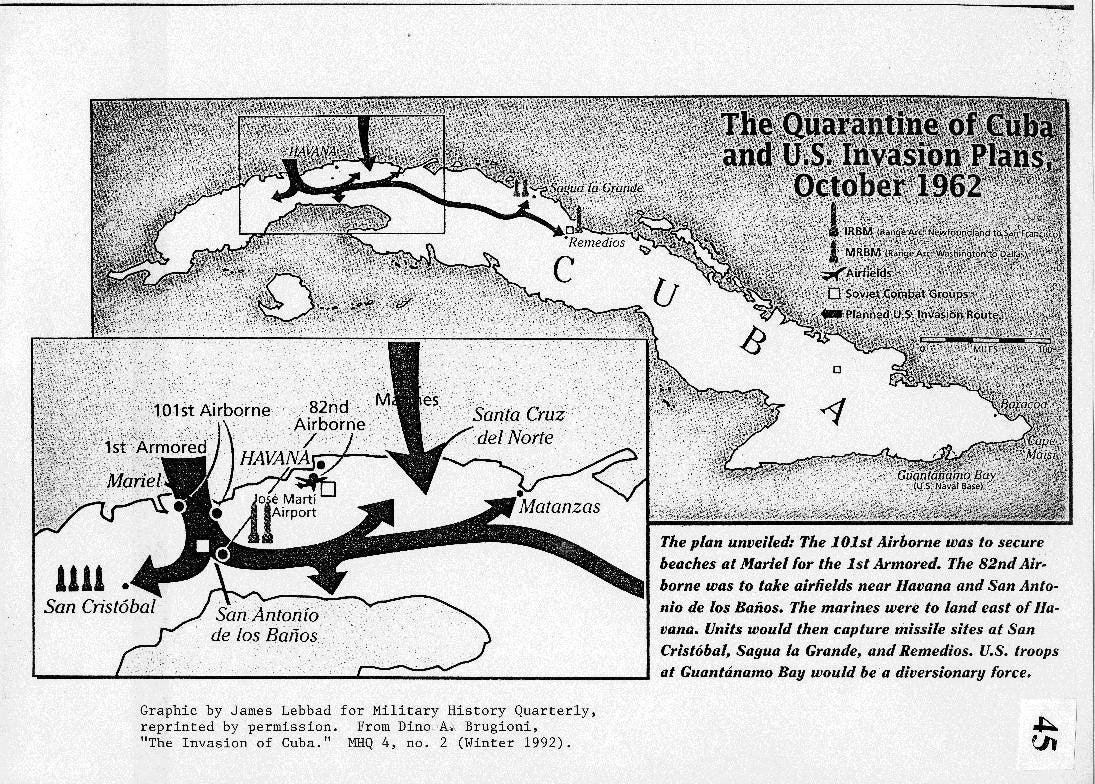
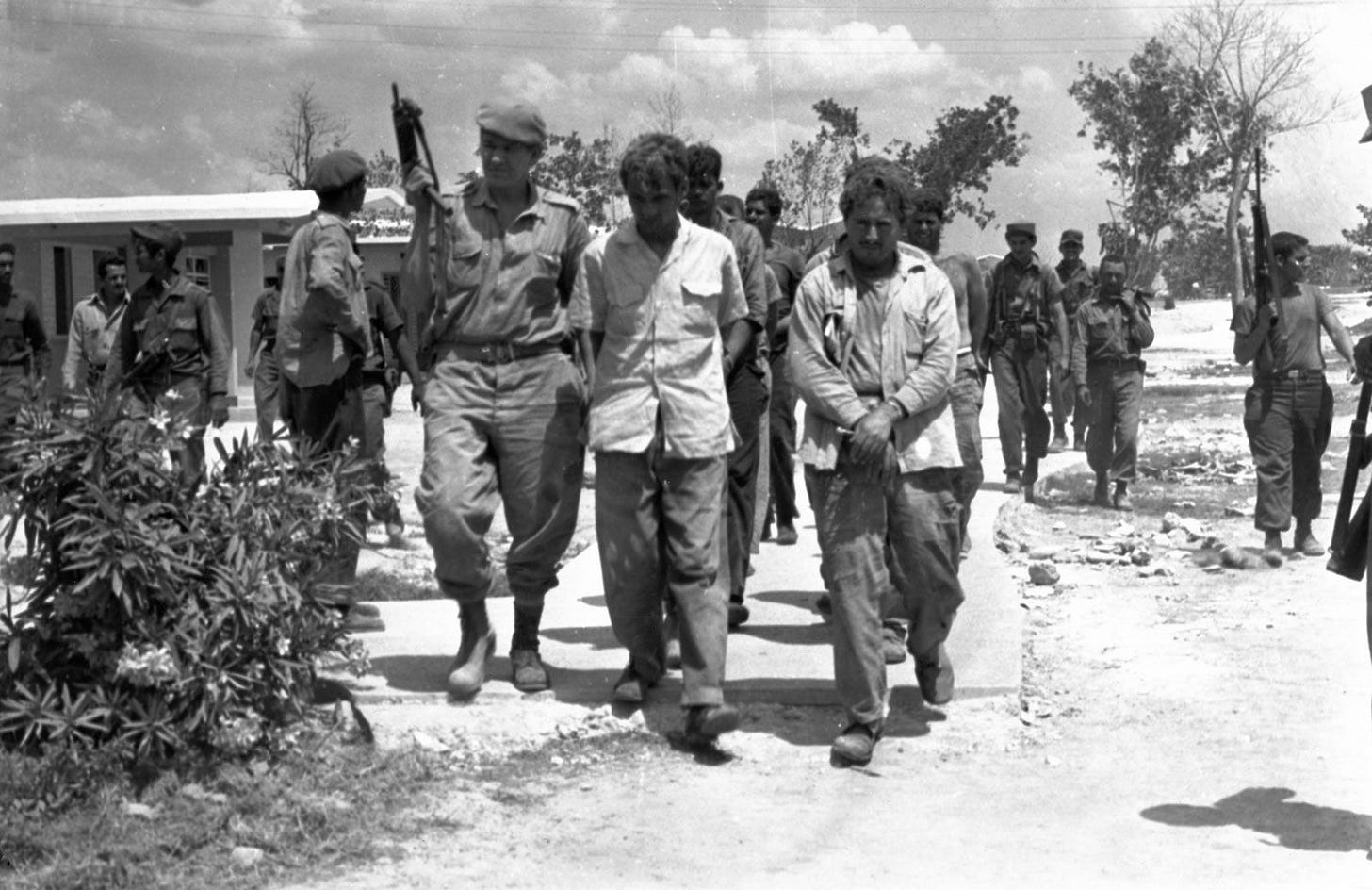
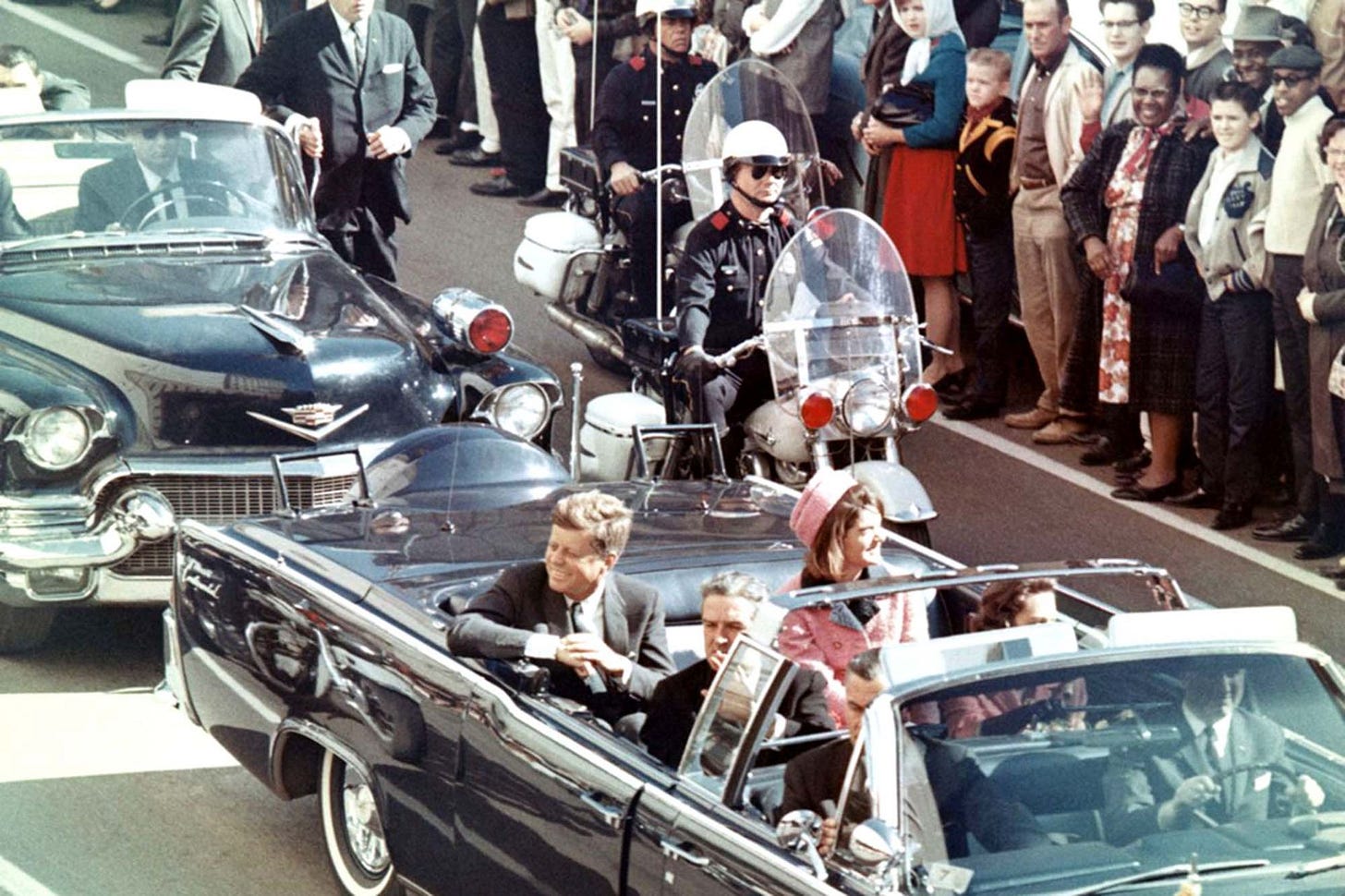
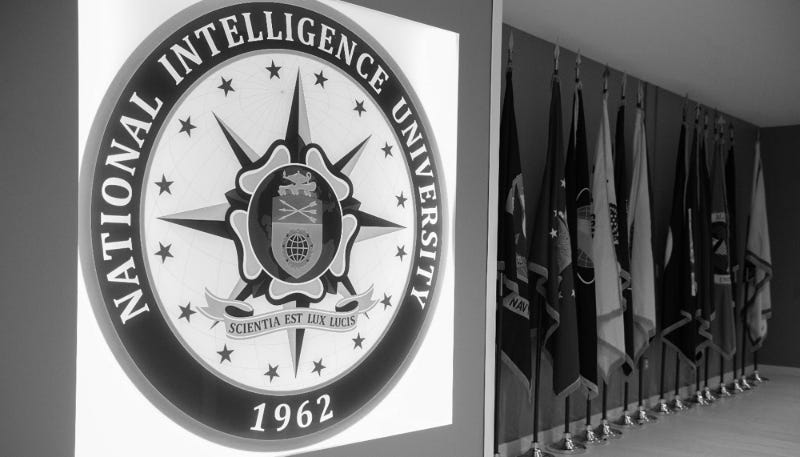

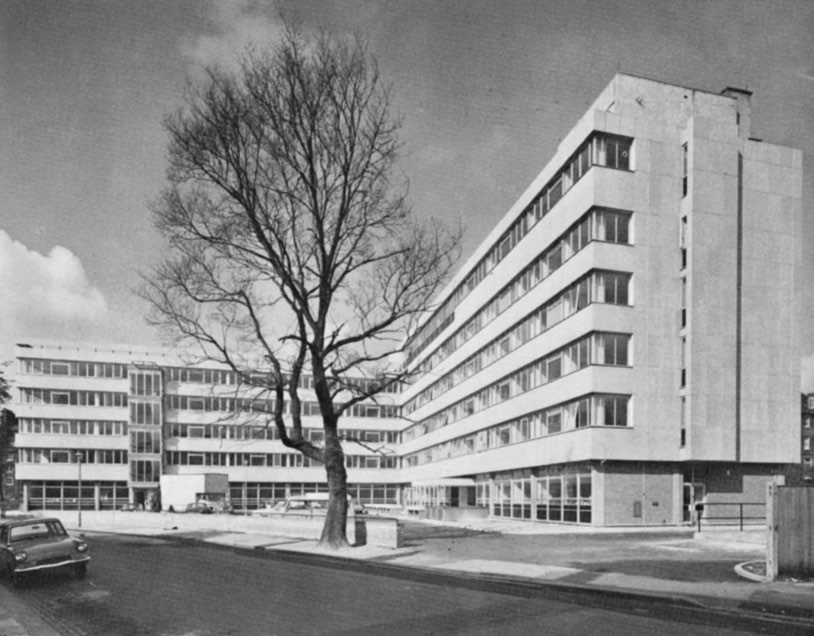


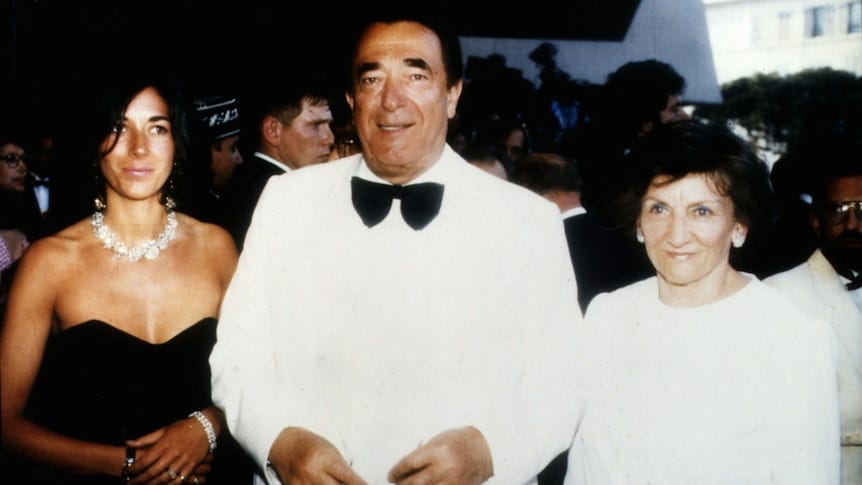


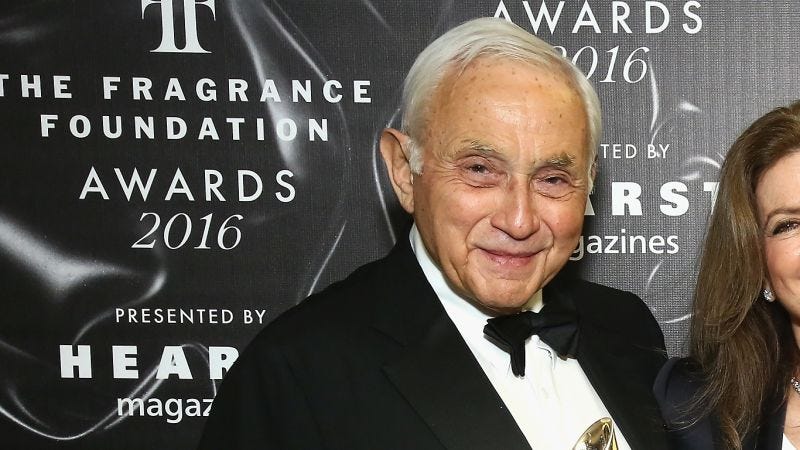
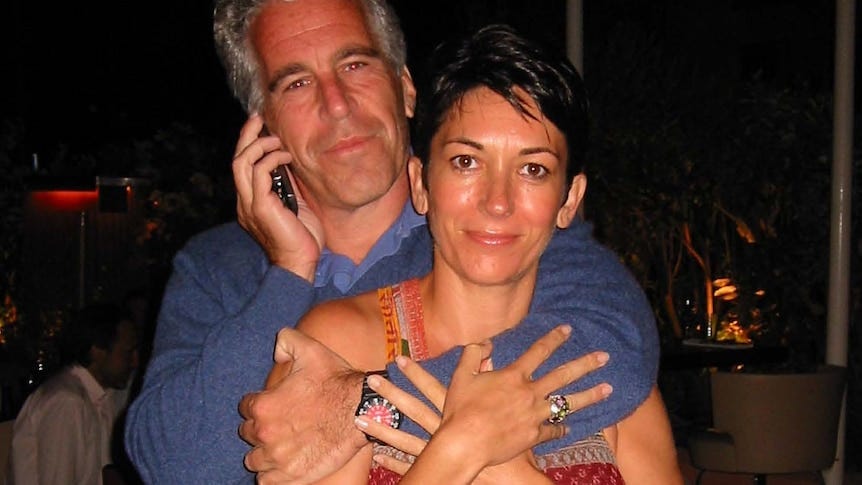
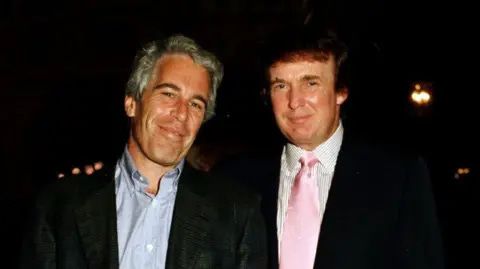
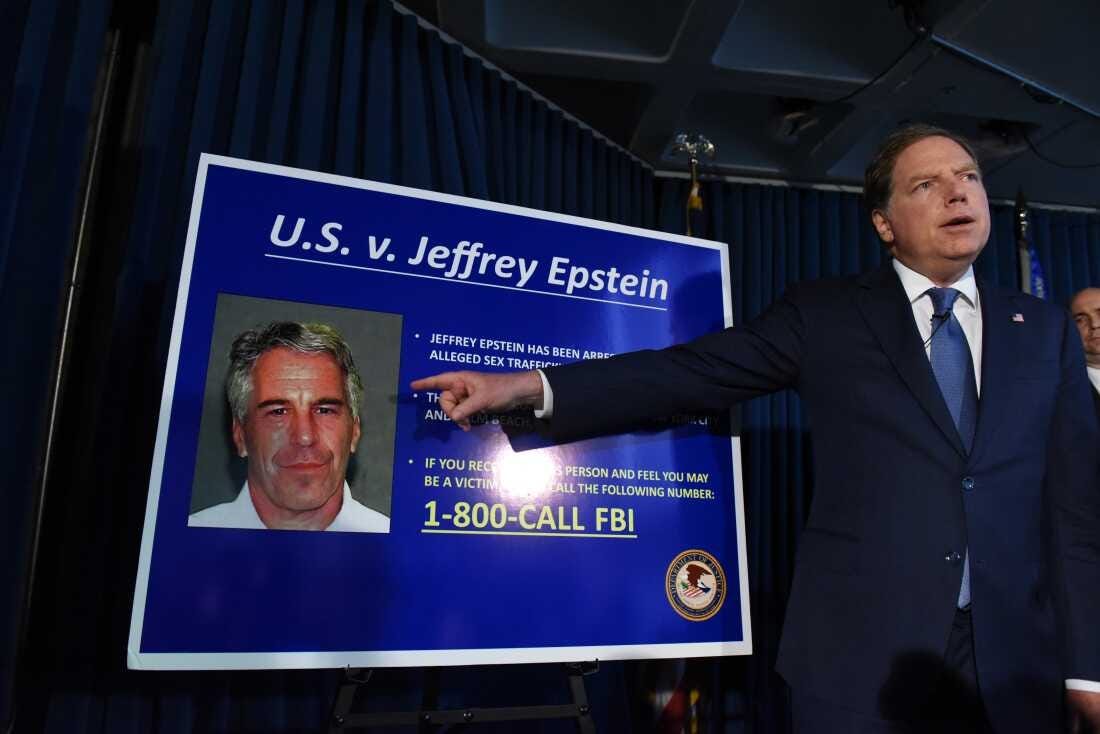
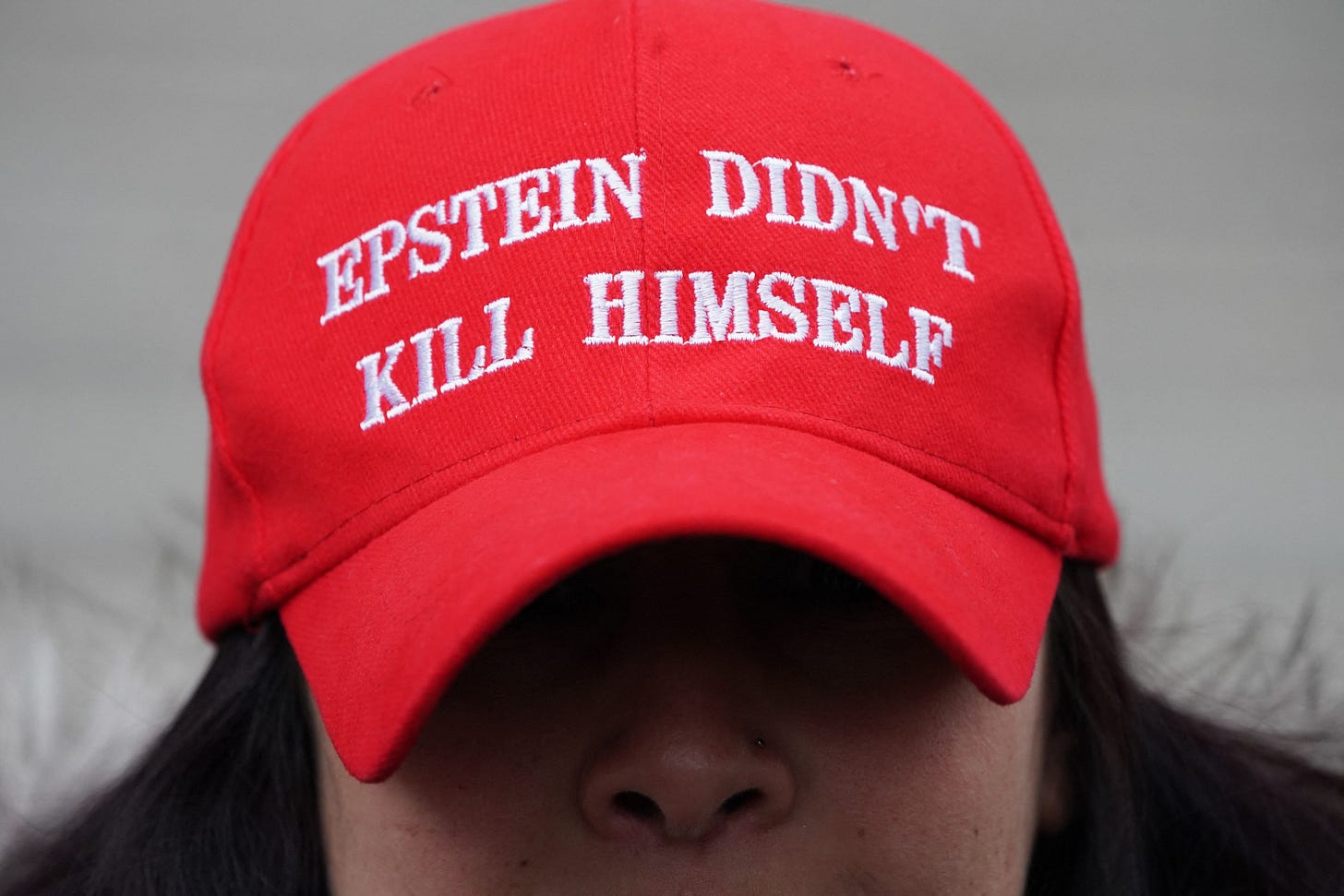


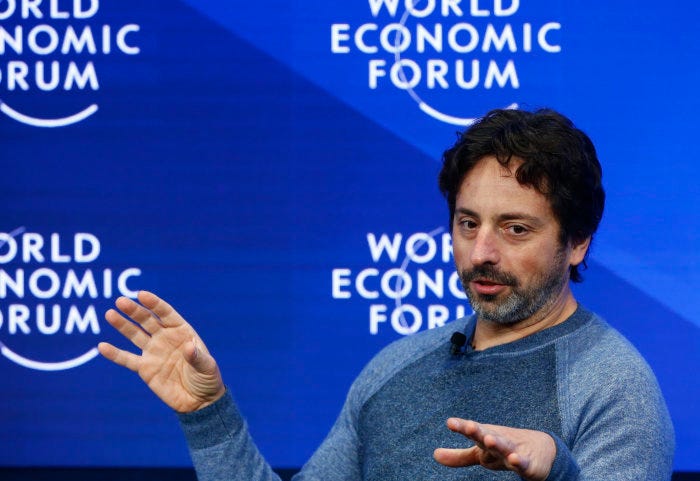

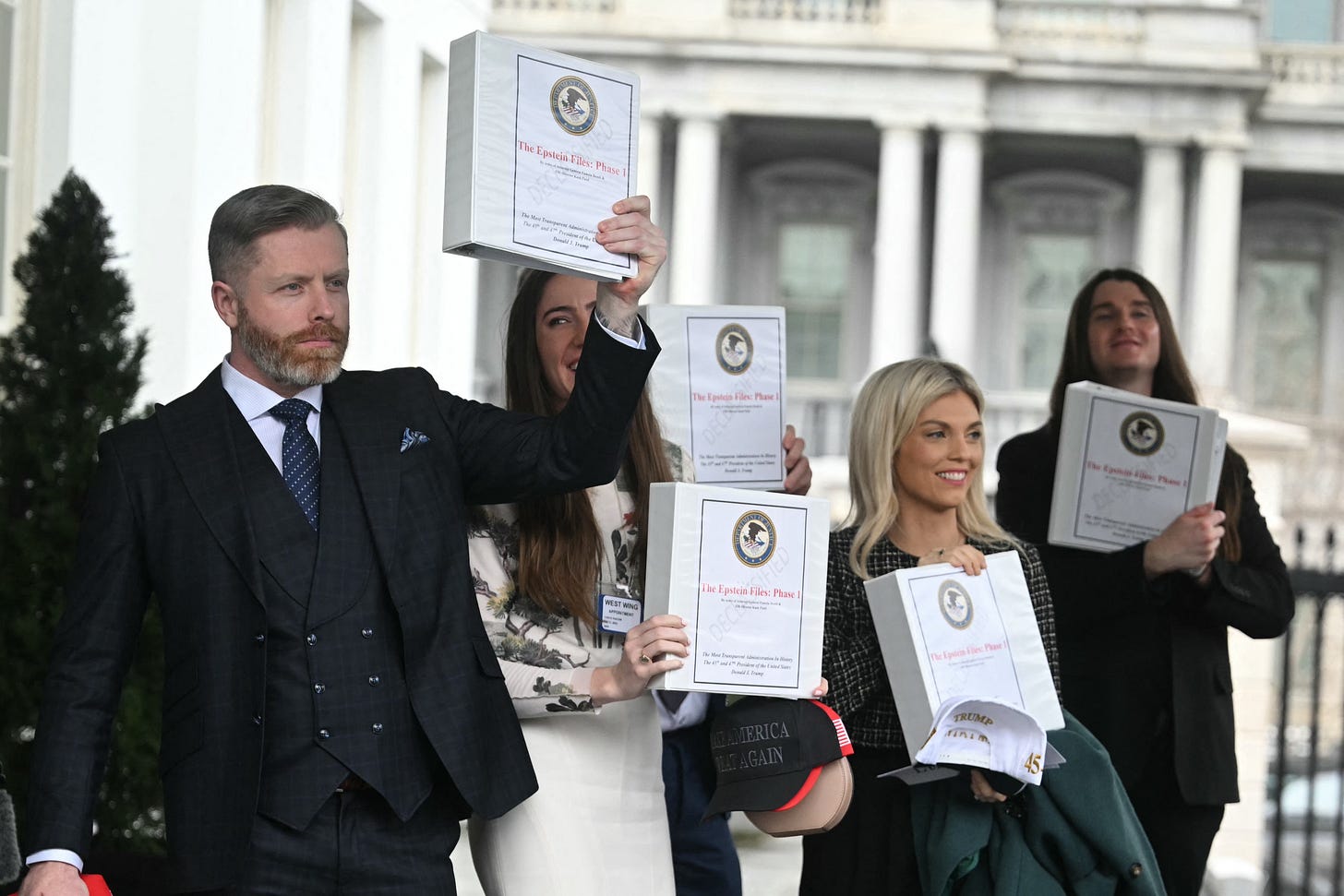
It’s pretty cool that almost every episode of the Blacklist correlates to a past , real time or future area of corruption in this world. What a great read. Looking forward to part two.
Outstanding deep dive I knows just scratching the surface I recall a Manuscript back in the early eighties that explored what you are publishing you have done a great job service to the cause for truth Hand Salute Josh Well done